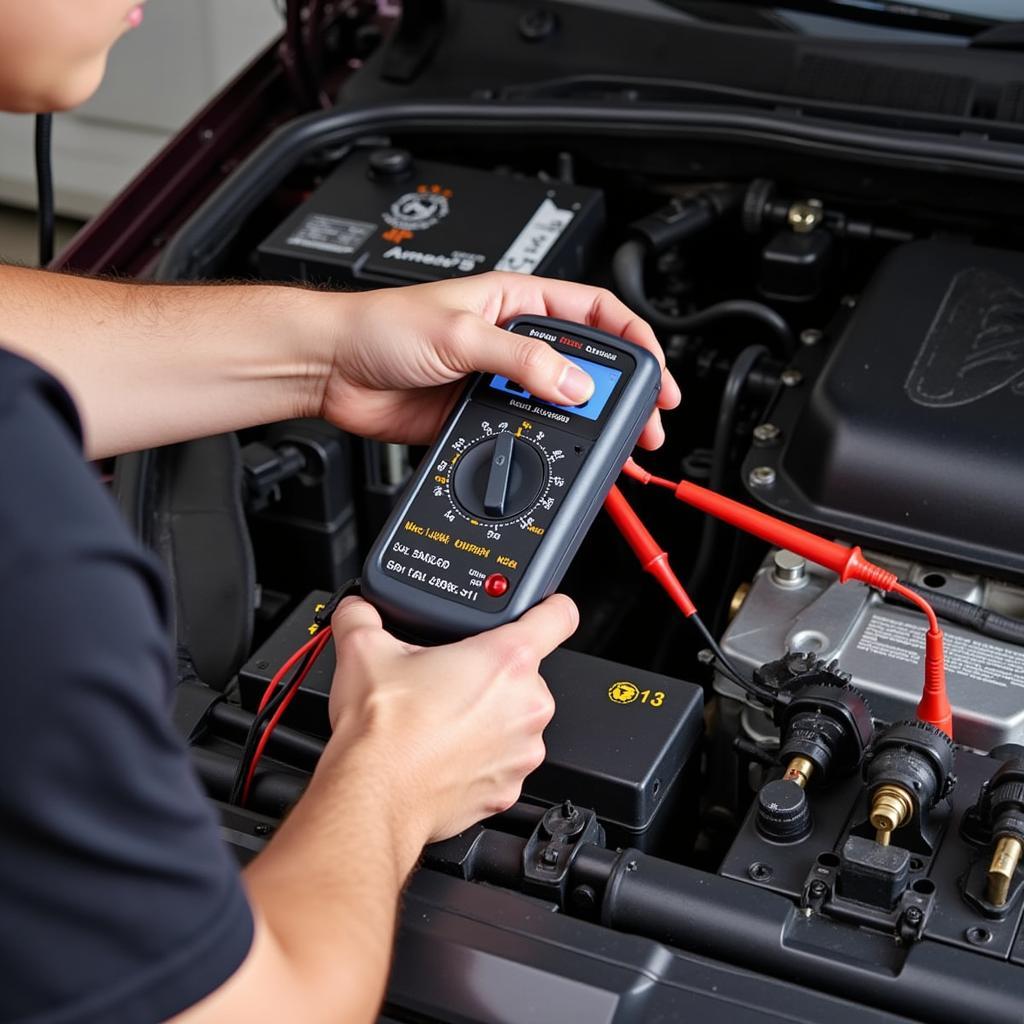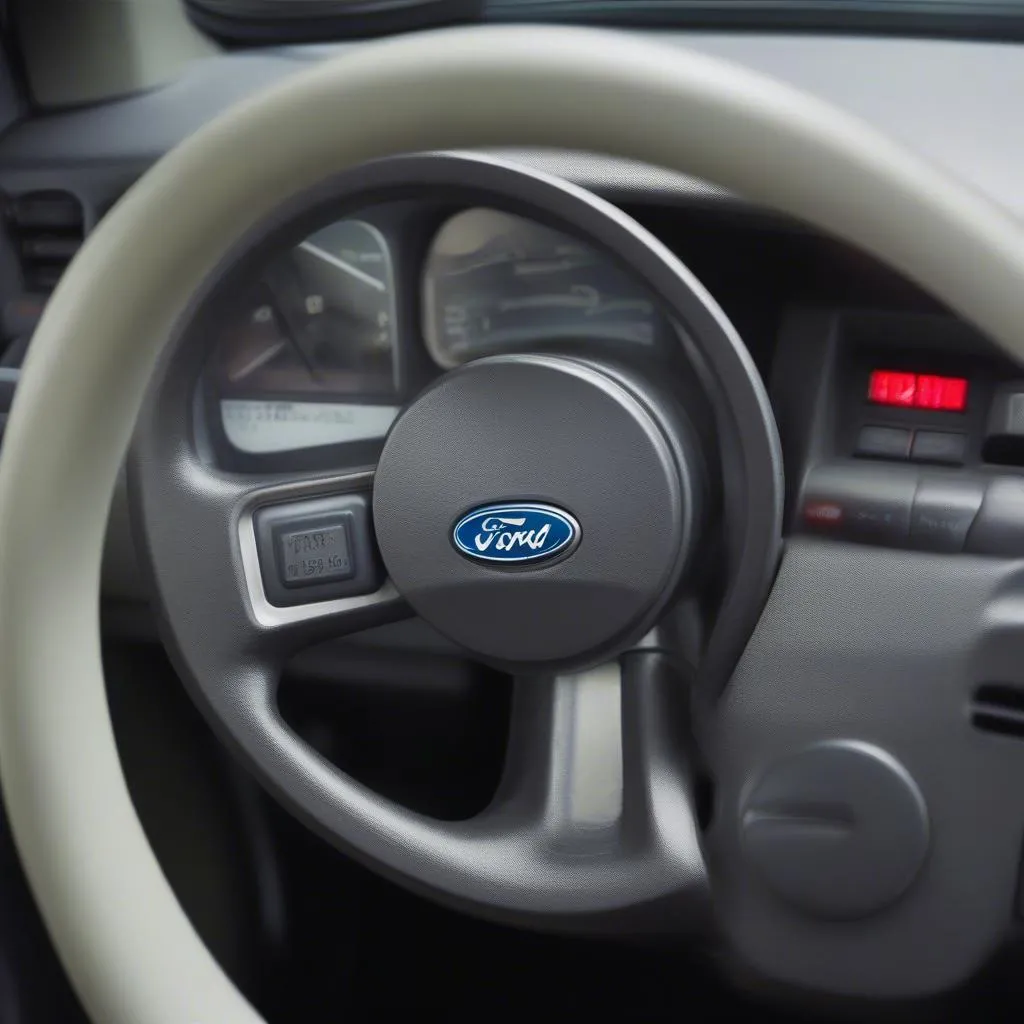A glowing brake light warning light on your Ford dashboard can be alarming. It signals a potential issue with your braking system, requiring immediate attention. While it doesn’t always mean a complete brake failure, ignoring it can compromise your safety and lead to more costly repairs down the line. This comprehensive guide delves into the common causes of this warning light and outlines the steps you can take to diagnose and address the issue.
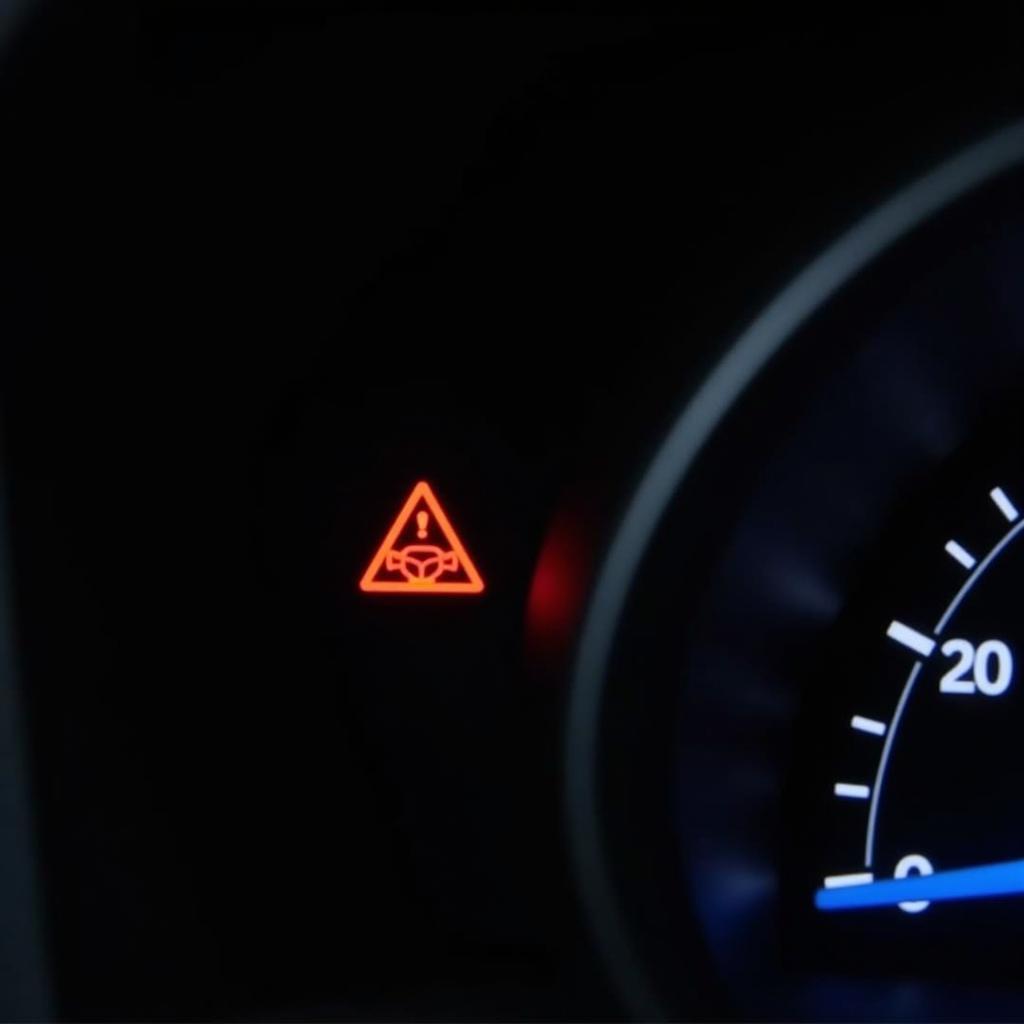 Ford Brake Light Warning on Dashboard
Ford Brake Light Warning on Dashboard
Common Causes of Ford Brake Light Warning Light Activation
Understanding why your Ford brake light warning light is on is the first step toward resolution. Here are some of the most common culprits:
1. Worn Brake Pads
Brake pads are your first line of defense when braking. Over time, they wear down due to friction. When they reach a certain thinness, a sensor triggers the warning light, signaling the need for replacement.
2. Low Brake Fluid Level
Your Ford’s braking system relies on hydraulic pressure created by brake fluid to function correctly. If the fluid level drops too low, often due to a leak, the warning light illuminates.
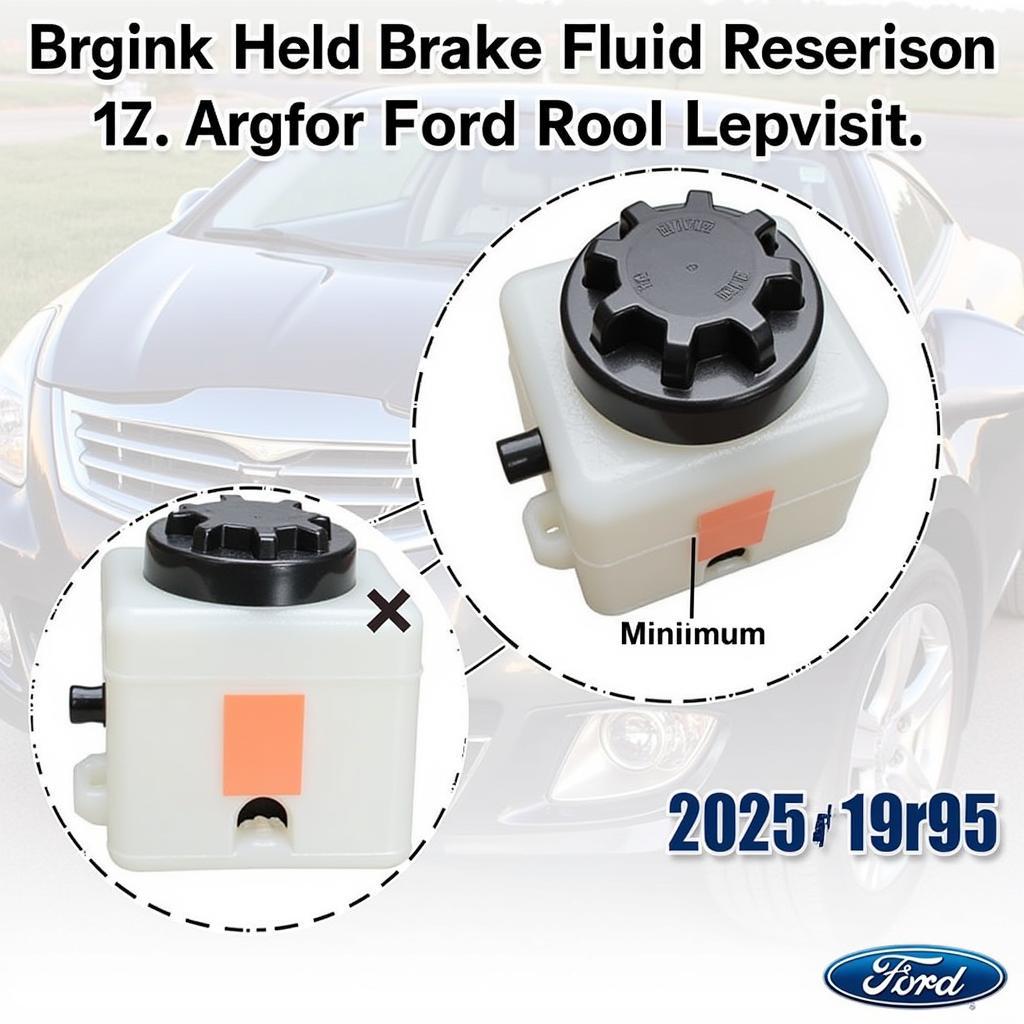 Checking Brake Fluid Level
Checking Brake Fluid Level
3. Faulty Brake Light Switch
The brake light switch, located near the brake pedal, activates your brake lights when you press the pedal. A malfunctioning switch can disrupt this process, causing the warning light to illuminate even if your brake lights are working.
4. ABS Issues
Modern Ford vehicles are equipped with Anti-lock Braking Systems (ABS). If the ABS module or a wheel speed sensor malfunctions, the system can trigger the brake light warning light.
5. Parking Brake Engaged
While seemingly obvious, accidentally leaving your parking brake even slightly engaged can trigger the warning light.
Diagnosing the Issue: A Step-by-Step Guide
Before heading to a mechanic, you can perform some basic checks:
- Check Your Parking Brake: Ensure your parking brake is fully disengaged.
- Inspect Brake Fluid Level: Carefully open the brake fluid reservoir and check the fluid level. If it’s low, add the correct type of brake fluid as specified in your owner’s manual.
- Visually Inspect Brake Pads: If you’re comfortable with basic car maintenance, you can visually inspect your brake pads for wear. Look for thin pads or metal-on-metal contact.
- Check Your Brake Lights: Have a friend press the brake pedal while you check if all brake lights are functioning correctly.
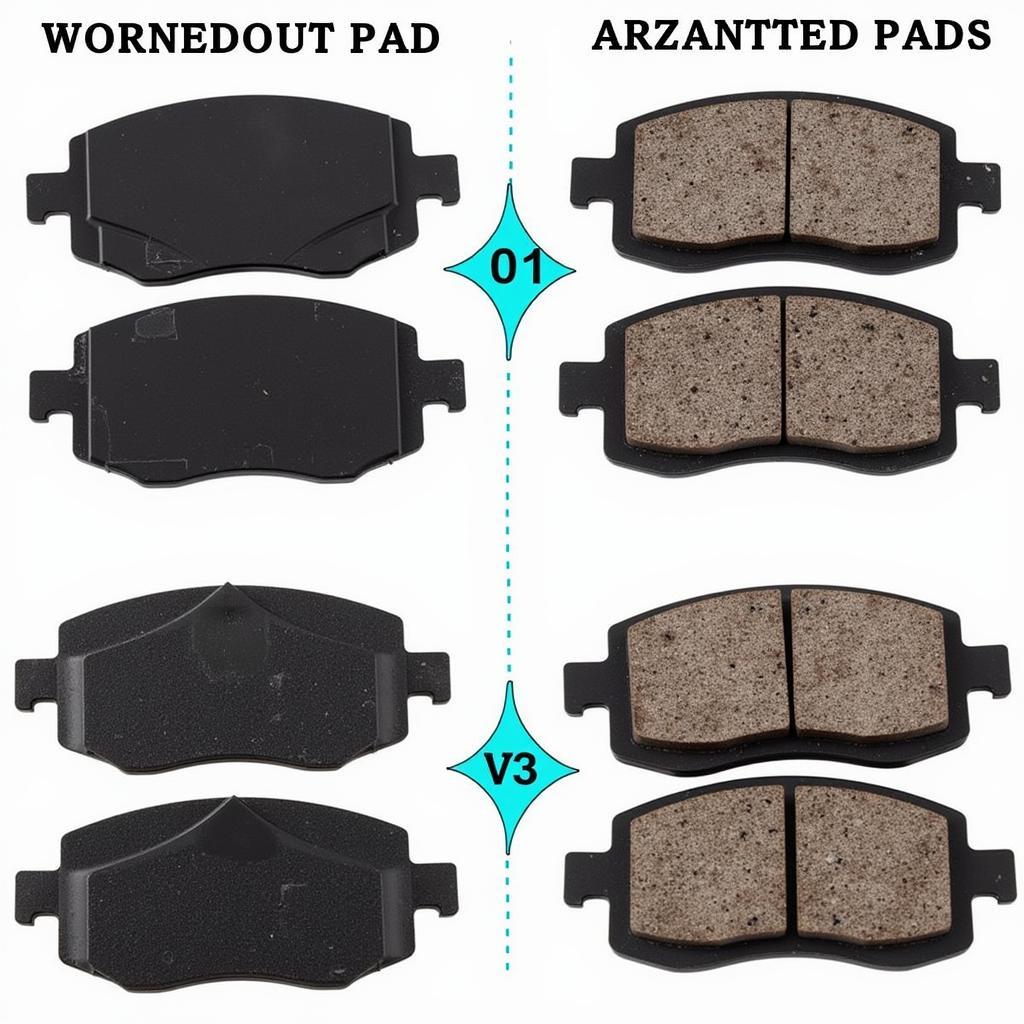 Inspecting Brake Pads for Wear
Inspecting Brake Pads for Wear
When to Seek Professional Help
If your brake light warning light persists after performing these checks, it’s crucial to seek professional help immediately. Driving with a compromised braking system is incredibly risky. A qualified mechanic can accurately diagnose the issue using specialized equipment and perform the necessary repairs.
Remote Diagnostics and Programming: The Future of Automotive Repair
Advancements in automotive technology have paved the way for remote diagnostics and programming. This innovative approach allows technicians to access a vehicle’s computer system remotely, diagnose issues, and even install software updates wirelessly.
This technology is particularly beneficial for addressing warning lights like the brake light indicator. Through remote diagnostics, a technician can often pinpoint the root cause of the problem without needing to physically inspect the vehicle. This can save time and money, allowing for quicker repairs and potentially preventing more serious issues down the line.
For instance, a “2012 Ford Focus brake light bulb fault fluid warning” could be diagnosed and addressed remotely. The technician can analyze the vehicle’s data, determine if a faulty sensor is triggering the warning, and potentially reset the system—all without needing the vehicle to be physically present at the repair shop.
Similarly, issues like a “Ford Fusion parking brake malfunction warning” could be diagnosed and resolved using remote programming. The technician can access the parking brake control module, identify any software glitches, and install necessary updates to rectify the problem.
Conclusion
The brake light warning light on your Ford is a crucial safety feature, indicating a potential issue with your braking system. Don’t ignore it. By understanding the common causes and following the recommended steps, you can take proactive measures to ensure your safety and prevent further damage. Remember, when in doubt, always consult a qualified mechanic for a thorough diagnosis and repair. Embracing advancements like remote diagnostics and programming can further streamline the repair process and ensure optimal performance of your Ford’s braking system.

